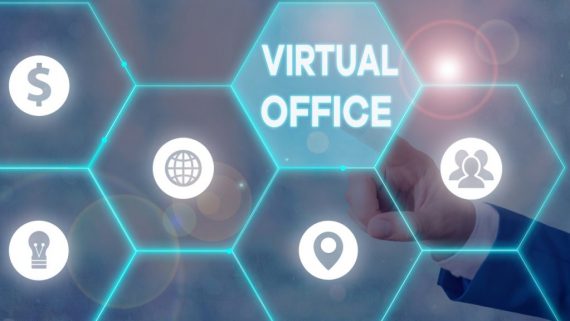The Virtual Workforce – It’s a New World (well, not really)
Carly Schrager, CEO of Definitive Results, explains how your team can work in the cloud…
While the concept is far from new, the virtual workplace IS growing increasingly more widespread. I started working from home in early 2007 – even if it was only just for a few days a week. I felt SO lucky to have such a flexible setup. I was benefiting from the best of both worlds- two or three days in the office, where I could go to lunch with my co-workers and have meetings face-to-face, and then 2 or 3 days to work from home, where I could be heads down and get a lot of work accomplished – without the unforeseen interruptions of the work environment, and very efficiently (didn’t even have to waste time with a commute!) Oh, and yes, I could throw a load of laundry in as an alternative to the conventional “water break”.
Going Virtual: The Logistics
When I started Definitive Results in 2012, I knew building the A-class, talented team I envisioned would be much more difficult if I limited the pool to just our local region and to compound the difficulty, the idea of overhead for an office space was daunting.
I started researching the concept of a virtual work environment, tackling things like-How will we communicate? How will we know if the team is actually working? How will we bond? For those of us leading in the virtual working world and ultimately, the digital space, we haven’t been handed guidelines or best practices with the conventional “here’s how you do it right” since the practice wasn’t widespread, and no one had ‘figured it out’ yet.
In my 7 years of experience, having successfully built a team of Marketing Automation experts living across the country, these are the few key recommendations I can share when you’re building a successful virtual team:

Face-time: Since the day-to-day physical interactions and water cooler discussions are not actually built into the business, it is imperative to intentionally build in some casual face time within your work environment. A good example of this is to have regular video conference calls. Some businesses insist all calls are video (I don’t think that is necessary). For example – a weekly team video call is beneficial.
Periodically, think about how to effectively and productively pull the team together. An example could be an in-person 1-day or 2-day team meeting, providing your team with the opportunity to accomplish company business goals in addition to promoting team-building, as well as for casual conversation and “get-to-know-you” time. When attending conferences, if team members are going together, – build in time for some bonding at the conference, or around the conference agenda.
 OVER-communicate: Because you can’t speak to someone over the cubicle wall or swing by their office to verify if they saw your latest email, everyone must over-communicate. When someone sends an email request, responding with a quick note such as, “got it, will review and get back to you within the hour” provides employee accountability and transparency. Of course…(and drum roll, please)… following up, as promised, with feedback such as, “looks great, I got it” or “Here are some questions I have…” provides responsiveness and openness, keeping team members on track with each other’s professional expectations.
OVER-communicate: Because you can’t speak to someone over the cubicle wall or swing by their office to verify if they saw your latest email, everyone must over-communicate. When someone sends an email request, responding with a quick note such as, “got it, will review and get back to you within the hour” provides employee accountability and transparency. Of course…(and drum roll, please)… following up, as promised, with feedback such as, “looks great, I got it” or “Here are some questions I have…” provides responsiveness and openness, keeping team members on track with each other’s professional expectations.
Choose the best form of communication: As a rule of thumb, if I find that there are 3 or more emails back and forth on a particular topic, it’s just easier to pick up the phone and call. This generally;
- Prevents lots of wasted time due to a lack of communication in an email; and,
- Diffuses the feeling of negative feedback brewing that can usually be resolved by a quick conversation
It is always important to remember that we are real people on the other side of our electronic communications.
Trust is Key: Virtual work is built on the foundation of trust. If the trust is gone, the relationship can immediately diminish. And really, shouldn’t ALL work be built on the foundation of trust? I make sure that at Definitive Results, we are very clear during the onboarding process that employees are expected to be responsive on Google Chat (which is our internal chat platform), by phone, and email – if it takes 2 hours to respond to a colleague or supervisor, someone may begin to question productivity and work ethic. Of course, consistently meeting deadlines, or communicating immediately if the deadline is at risk, is a basic requirement of my team. When your team members can trust you, the team bond grows stronger, regardless of geography.
Fully virtual teams are not quite commonplace yet so there is no standardized guide to ensure success with the approach. However, for teams that have been working virtually together for quite some time, these few takeaways I’ve outlined have shown real benefits in bolstering this modern way of working in the digital space.
What have you found that contributes to a successful virtual environment? Leave your comments below – we want to hear from you!








Comments
No comment yet.